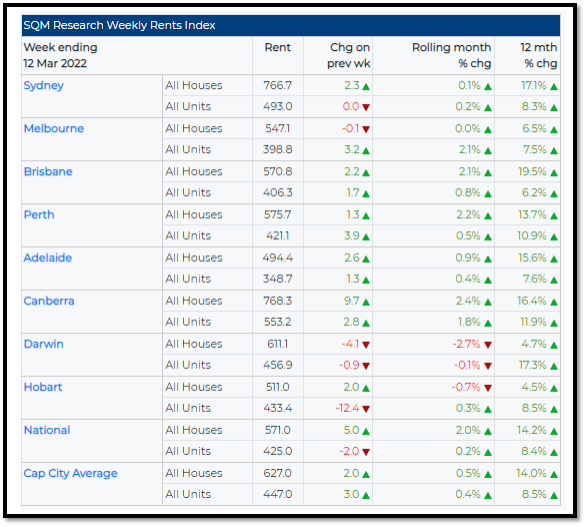Australia’s rental market is now facing a crisis as the supply of properties fail to keep up with the increasing demand.
SQM Research’s latest report found that the national vacancy rate fell to 1.2% in February, reaching a fresh 16-year low from January’s 1.3%.
The decline across most capital cities was subtle on a monthly basis, with Melbourne striking the biggest dip from 2.7% to 2.3%.
The rate at which vacancy rates are declining are more apparent on an annual basis. For instance, Melbourne’s vacancy levels dropped from 4.5% to 2.3%.
The tightest rental market in February was Hobart, where vacancy rates remained at 0.3%.
One key trend over the month was the revival of Melbourne and Sydney CBDs, which reported lower vacancy rates of 2.8% and 4.3%, respectively.
SQM Research managing director Louis Christopher said further declines in these CBDs are expected as international borders reopen and return-to-office commences for some companies.
“The new surge in international students and other overseas arrivals will continue to create shortages in our inner-city regions,” he said.
“This situation now represents a significant rental crisis across the country — the flooding may exacerbate the shortage of rental accommodation in NSW and Queensland in coming weeks.”
However, Mr Christopher said the market might loosen slightly as the seasonal tightness moderates by the end of April.

Meanwhile, asking rents maintained its uptrend, striking a 9.4% growth over the year to the second week of March.
“As it stands, the current rent rises represent the largest increase since the 1970s and so there are major near terms ramifications for inflation,” Mr Christopher said.
“All the same, we can expect capital city rents to rise by over 10% in 2022.”
Brisbane houses reported the highest gains in rent over the period, increasing by 19.5%. This was followed by unit rents in Darwin (17.3%) and house rents in Sydney (17.1%).
